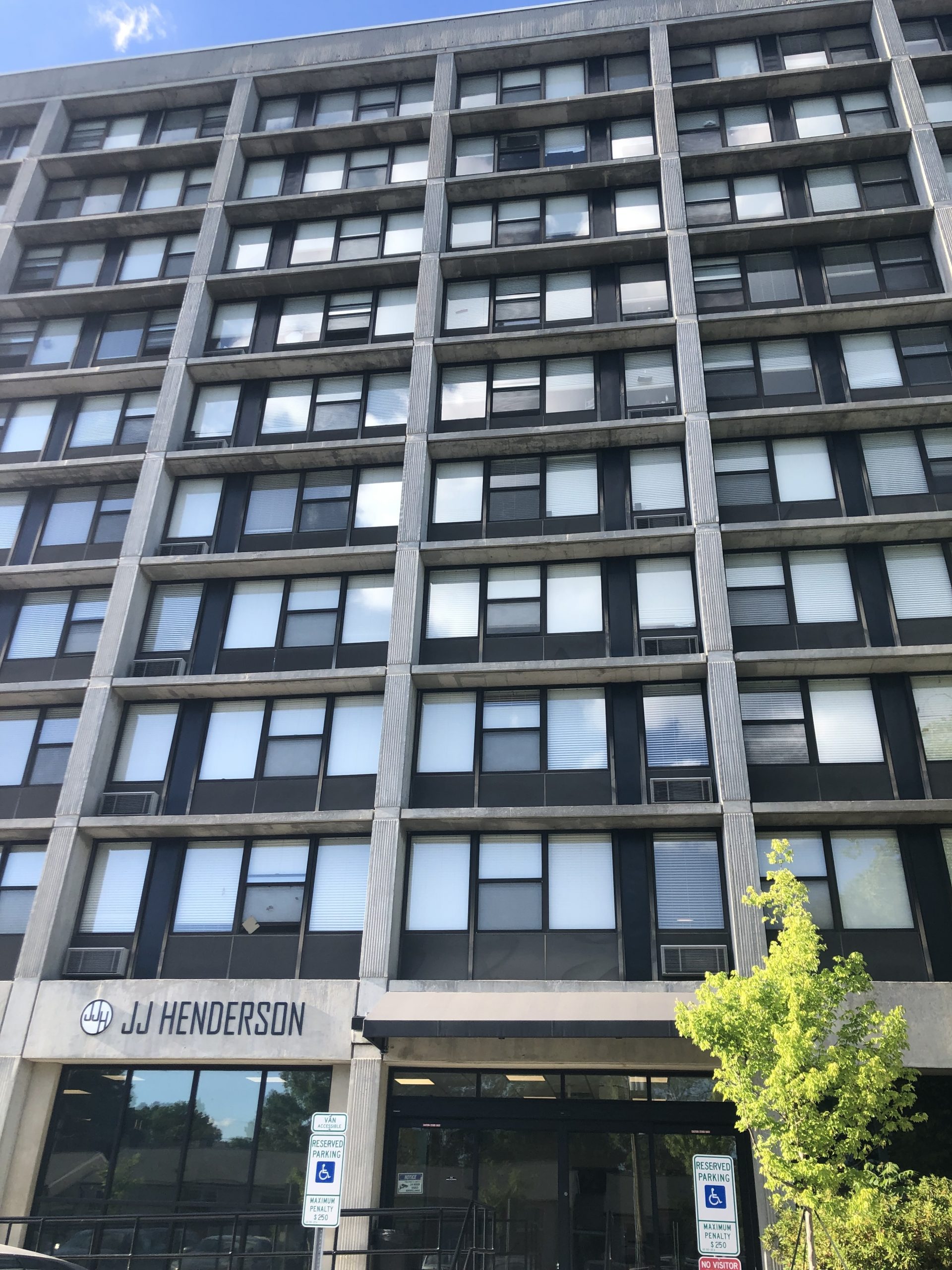
J.J. Henderson Senior Apartments, newly renovated by the Durham Housing Authority and other partners | Photo by Mary Mungai
Higher housing prices are driving Durham residents to leave, and amidst this growing dilemma, an important question remains: who is affordable housing actually affordable for?
The hike in rent and housing prices in Durham is part of a larger national trend. According to a 2022 report from the National Apartment Association, the U.S. needs to build 4.3 million new apartment homes by 2035 to meet the demand for rental housing – a demand partially influenced by the 2008 financial crisis.
“You know, we’re in a unique situation, the fact that there’s so many people moving into the area, which is great, to some extent, because it’s growing in its environment or city and county, but at the same time, it puts an enormous amount of strain on the housing stock,” said Irene Butler, the government affairs director for the Triangle Apartment Association.
However, this strain has resulted in gentrification and displacement.
“Some people just can’t afford to stay in Durham anymore and they move to Granville County, you know, up in that area, Henderson,” said Omar Beasley, former chairman of the Durham Committee on the Affairs of Black People. “I’ve known quite a few people that have had to make a migration outside of Durham, and, you know, it’s because of the cost of housing, tax rates, all gone up.”
Aalayah Sanders, communications manager for the Durham Housing Authority, explained that this gentrification is tied to the increasing number of residents moving to the Triangle with higher incomes than those already living here. While outside investors are a factor, she said it is the lack of adequate supply is what keeps prices increasing.
The mission of the Durham Housing Authority is to preserve its supply of existing units and build new developments, Sanders said. The role of the DHA is critical, given that they provide income-restricted housing, which protects residents from market fluctuations by basing their housing costs on a certain percentage of their income.
This is an opportunity no other housing provider can accommodate, Sanders said.
While supply is a factor causing the displacement of some Durham residents, Beasley further explained the role both investment and divestment play into gentrification.
When companies invest in certain properties by buying them out, they lease them at prices much higher than some people can afford, he said.
“So that’s happening all over the place, but, you know, all that plays a role into gentrification, what they’re doing,” he said. “They fix these houses up, and then they lease them out at $2,000, $2,100, $2,300 a month, which is more than what, you know, most people can afford in this market for rent.”
Even though jobs with pay increases are coming to Durham, Beasley said many of those claiming these jobs aren’t current residents of Durham, but people who are moving to Durham.
This trend is especially important since in Durham, many plans for affordable housing use the Area Median Income to determine affordability. The DHA uses it for their income-restricted housing, which protects residents from market fluctuations by basing their housing costs on a certain percentage of their income.
One such example comes from one of their biggest current projects. The Downtown and Neighborhood Plan started in 2019 to convert 447 units on 60 acres of land to about 2,500 units of mixed-income housing, Sanders said.
Of the new units, 843 will be available to families earning between 30-60% of the Area Median Income, according to the 2019 plan from the DHA and City of Durham.
Beasley expressed concern that the current metrics are already leaving an important group of Durham residents behind: such as city, county, hospitality and service workers, who he refers to as the workforce.
“Now, when you’re looking at the average median income for this market, you’re looking at the highest and the lowest, right, and in most cases, most Black and Brown people make significantly less, because those are the ones that are doing our service jobs, the hospitality jobs, you know,” he said. “So, they make significantly less, and if that median income area is, let’s say, $70-80,000 the people at the bottom, that affordable market, it’s still too much for them to get to.”
As high-paying jobs and high-paid workers come to Durham, Beasley says the Area Median Income may also rise, worsening the gap between what is considered affordable and what the workforce can actually pay.
Sanders said the Area Median Income for a family of four is now $100,000 – a value which has increased by over 25% in the last few years, making the definition of affordability reach higher incomes.
This issue is one the Durham Housing Authority is taking into consideration, alongside other rises in costs of living, Sanders said.
“And one of the things that we’ve noticed is that a lot of these subject matters are taking place in other cities across the country as well,” she said. “As we evaluate post-COVID the increase of living, increase of a lot of our everyday necessities have increased, and so that’s definitely a part of the conversations that we’re having at DHA.”
While many actors try to work out the complexities of housing in Durham, Beasley said Durham should do more to remember the voiceless and make sure they get whatever help they need.
Edited by Ava Dobson